# Connectivity in Graphs
Great Article Explaining the concept and properties
# DFS on Undirected Graphs
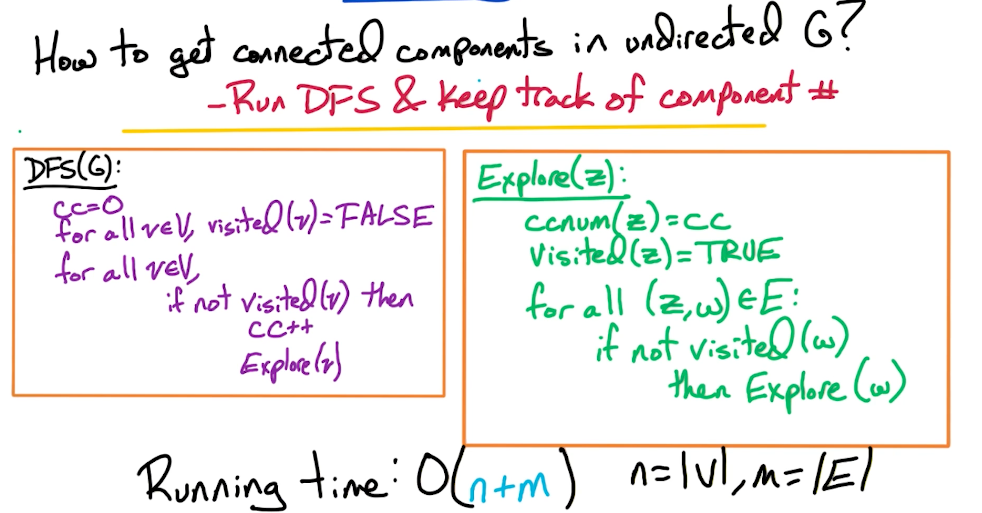
To find a path between connected vertices, we can use a prev object that gets populated as we traverse the graph with DFS.
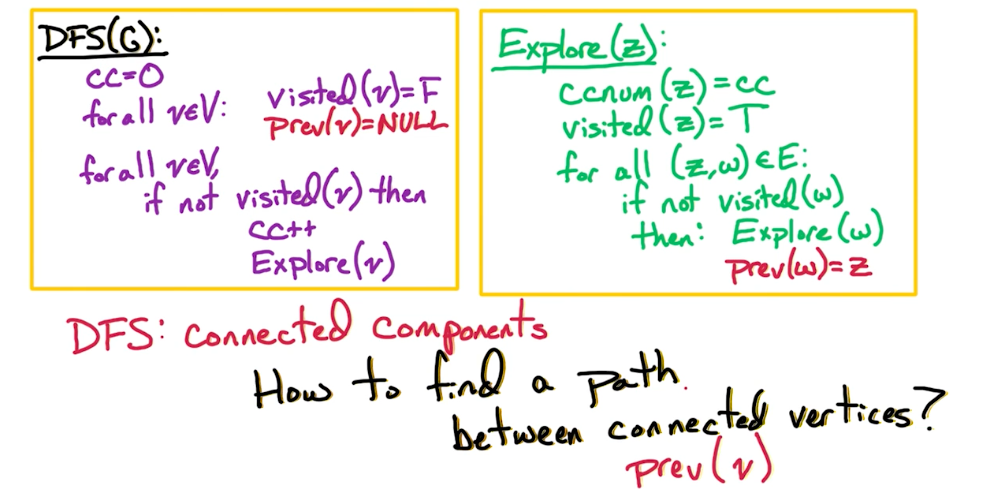
# DFS on Directed Graphs
The general algorithm is the same as for undirected graphs, but instead of using the component number (cc), we use the pre/post order numbers. For connectivity algorithms, we're simply using post order numbers and not pre order numbers.

An example of running DFS on a directed graph is below.
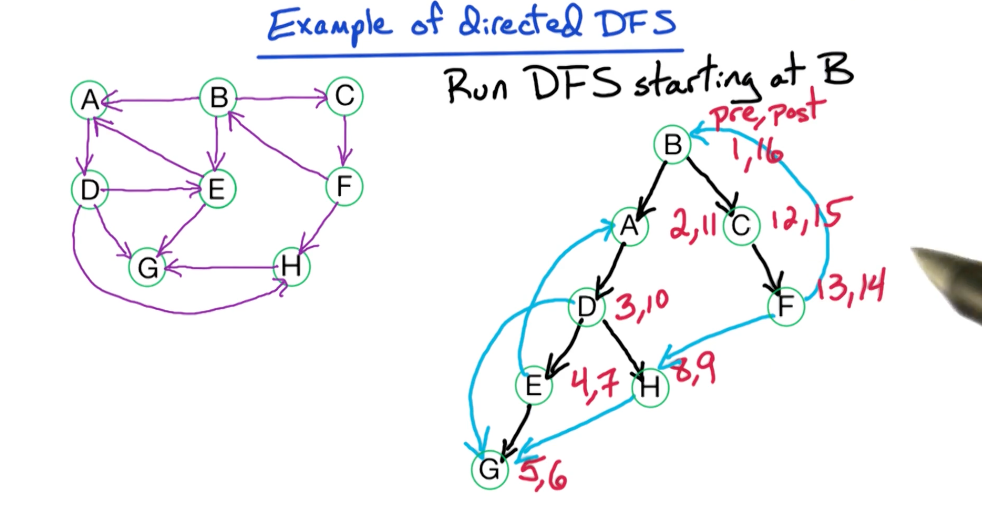
The blue lines below are not really edges, they are just left there to show paths that were ignored because a node was previously explored already.
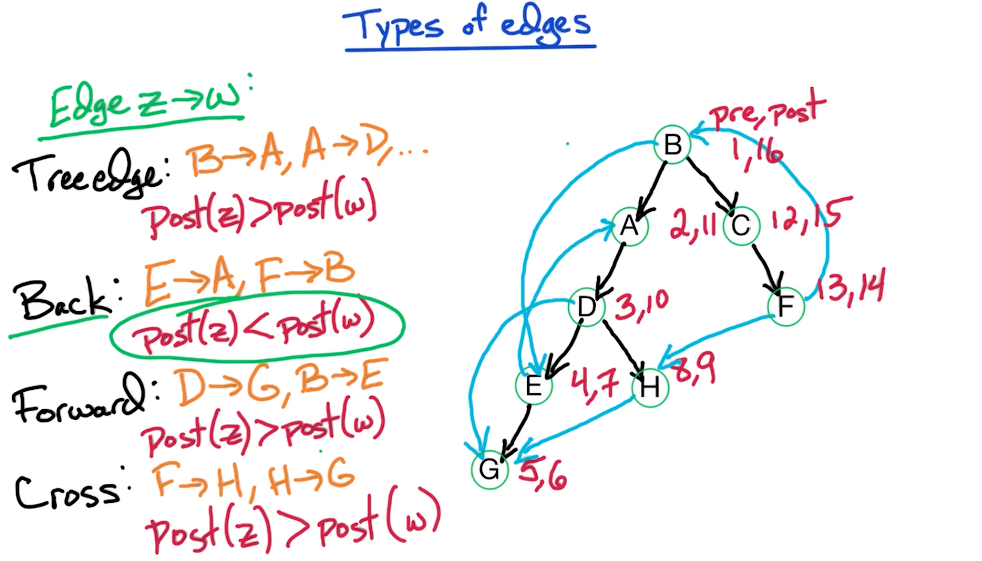
Tip: G has a cycle iff its DFS tree has a back edge
# Topological Sorting
DAGs are directed acyclic graphs i.e. no cycles i.e. no back edges.
Topologically sorting a DAG = order vertices so that all edges go from lower order number of vertex to higher.
- Run DFS on DAG G: O(n+m)
- for all
, we know since there are no back edges, so order vertices by decreasing post order number: O(n)
The post order numbers can be in the range of 1 to 2n, so we can make an array of size 2n to hold the values.
The running time of the algorithm is linear O(n+m)

# Source and Sink Vertex
Source Vertex = no incoming edges = highest post order number (imagine root)
Sink Vertex = no outgoing edges = lowest post order number (imagine lowest leaf)
# Alternative Topological Sorting Algo
- Find a sink, output it, and delete it
- Repeat the above until graph is empty
# Strongly Connected Components
Vertices v and w are strongly connected if: there is a path
Note that there might be several vertices along the way between these two vertices.
In simple words, a strongly connected component (SCC) is a set of vertices in a graph such that you can get from any vertices to the other within this set.
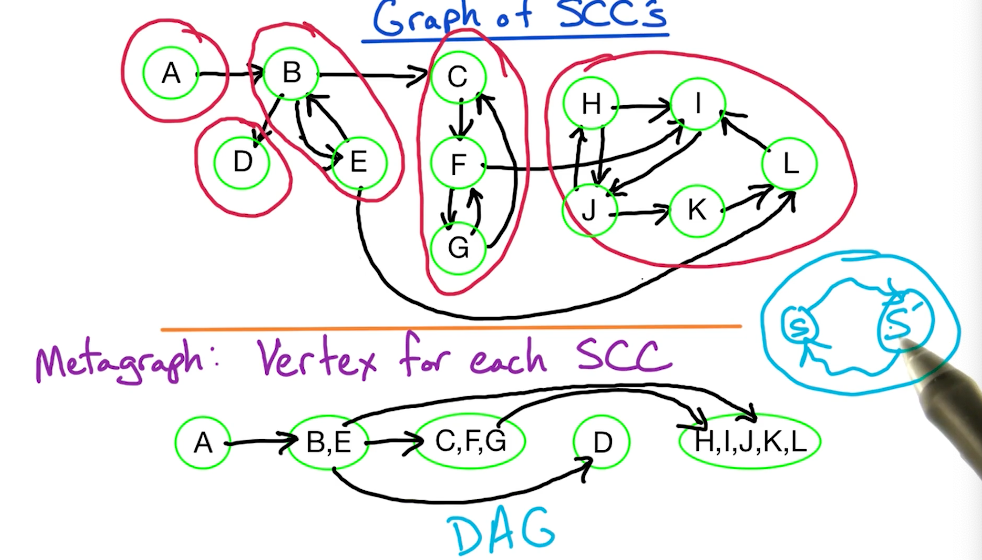
Tip: The metagraph of SCCs is always a DAG without any cycles. This is always the case since if there is a cycle, then it strongly connects two SCCs which invalidates the fundamental definition of an SCC.
Tip: vertex with lowest post order number does NOT always lie in a sink SCC. However, vertex with highest post order number always lies in the source SCC.
Since we are looking for a vertex in sink SCC, we can utilize the above fact to our advantage
- reverse the edges of the graph,
- Run DFS and get post order numbers
- The vertex with highest post order number lies in the source SCC of this reversed graph, which is the sink SCC of the original graph.

# Floyd-Warshall Algorithm
# Minimum Spanning Tree (MST)
# Input
The input to the MST problem is an undirected graph
# Goal
The goal is to find minimal size connected subgraph. In other words, a spanning tree of minimum weight that connects all the vertices of the graph.
# Properties of Tree
A tree is a connected acyclic graph.
Basic properties of a tree are:
- Tree on n vertices has n-1 edges. (Because if you have more than this edges there will be a cycle somewhere)
- There is exactly one path between every pair of vertices
- Any connected
with is a tree
# Kruskal's Algorithm
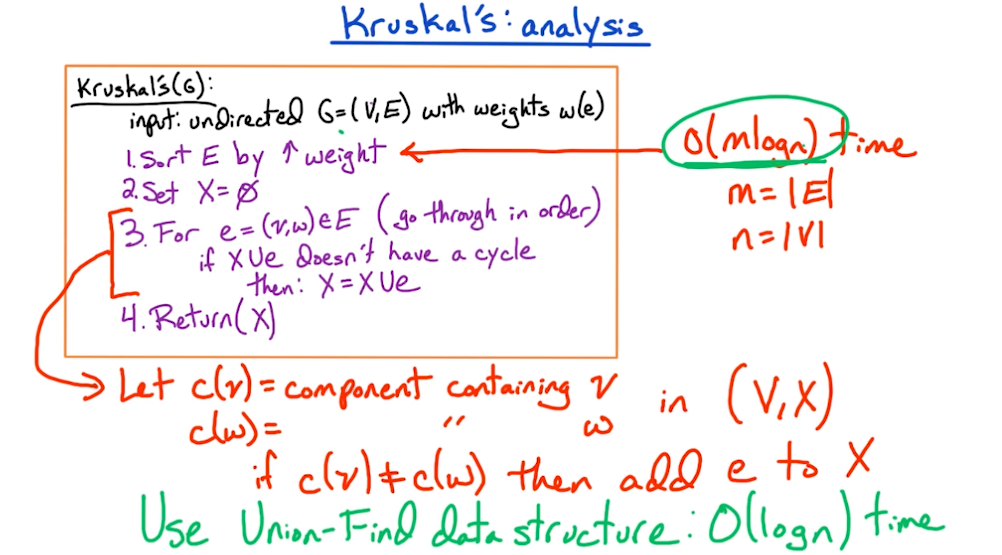
# Cut Property
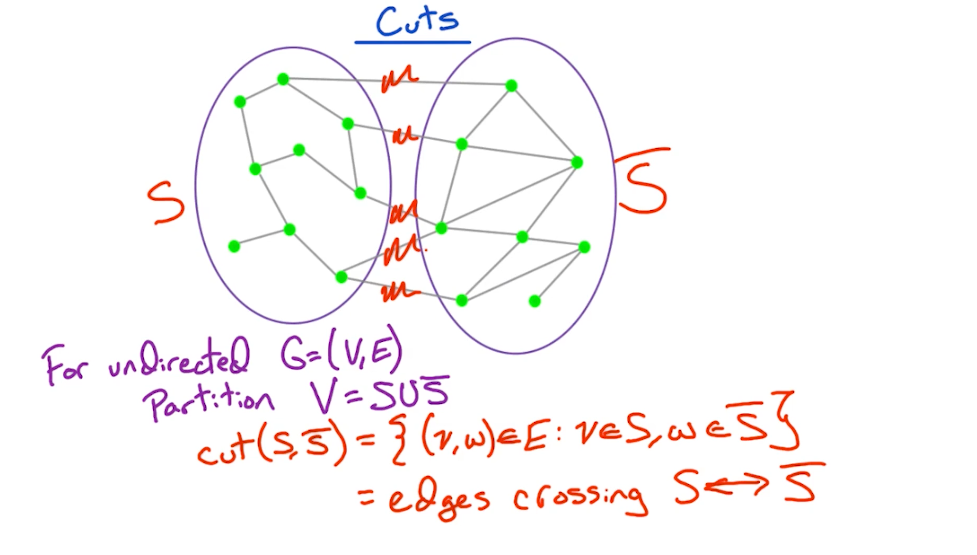
Cut Property: For any cut C of the graph, if the weight of an edge E in the cut-set of C is strictly smaller than the weights of all other edges of the cut-set of C, then this edge belongs to all the MSTs of the graph.
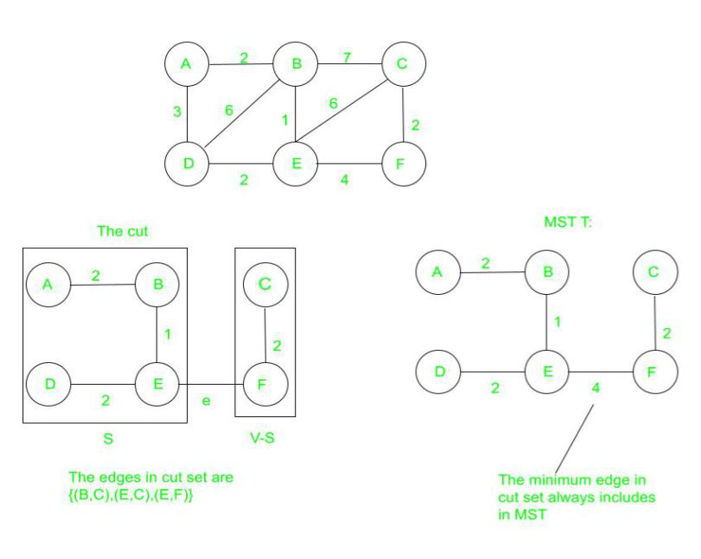
If all edges are of equal weights, we can find MST in linear time
# Prim's Algorithm
← RSA Satisfiability →
